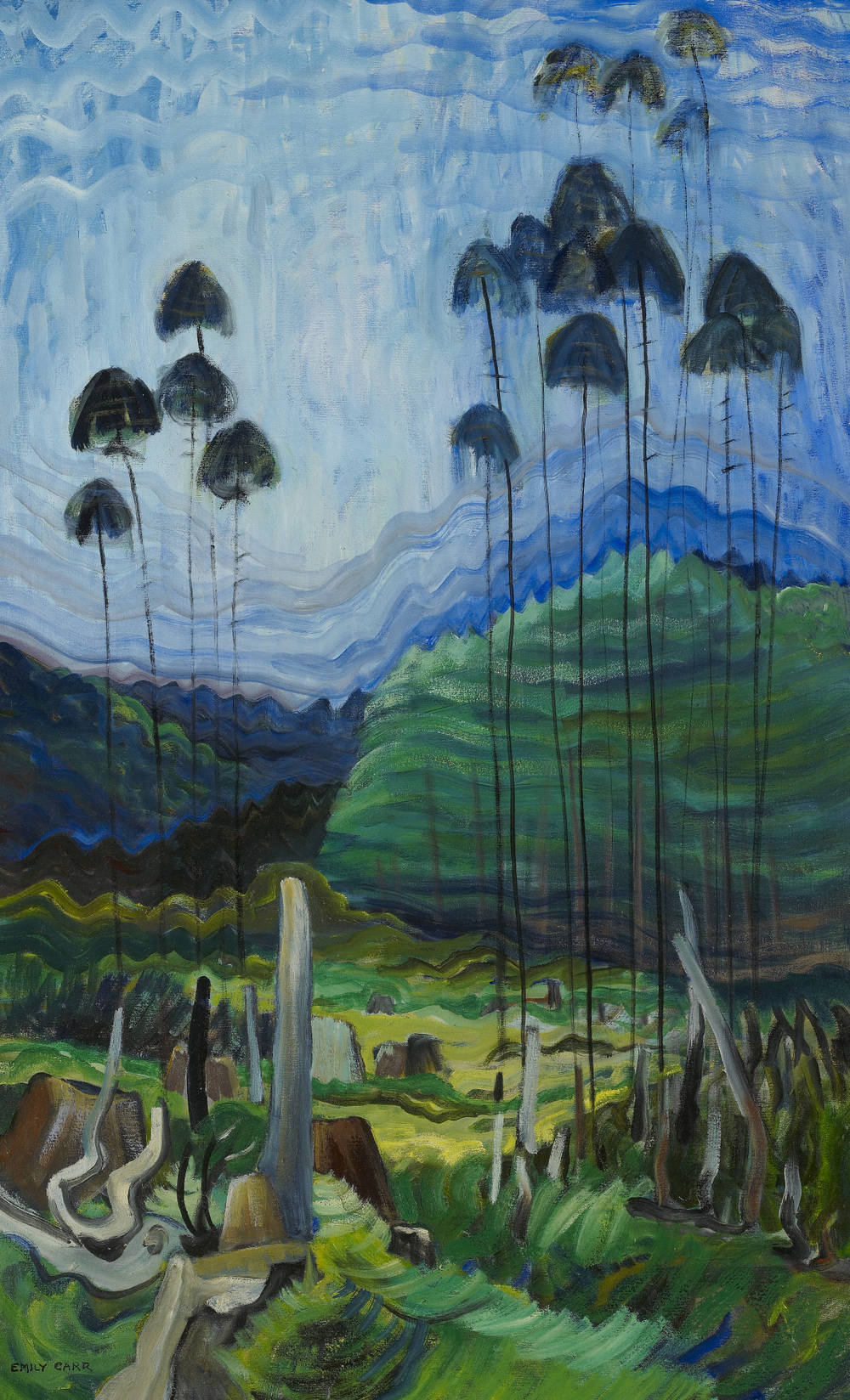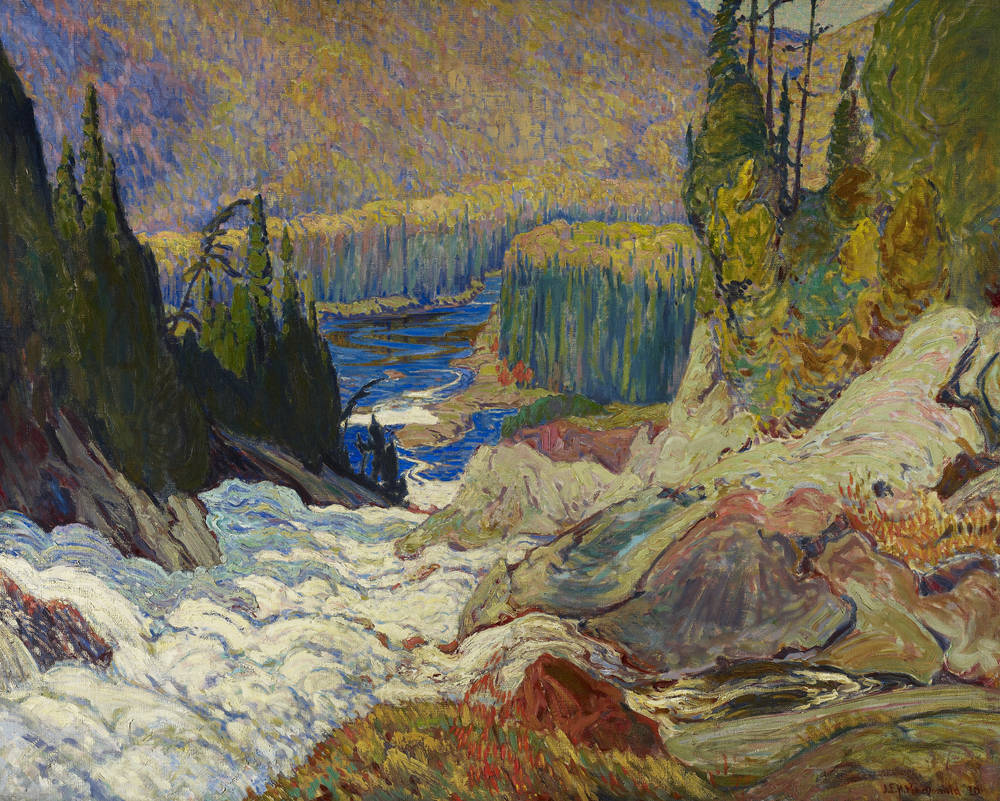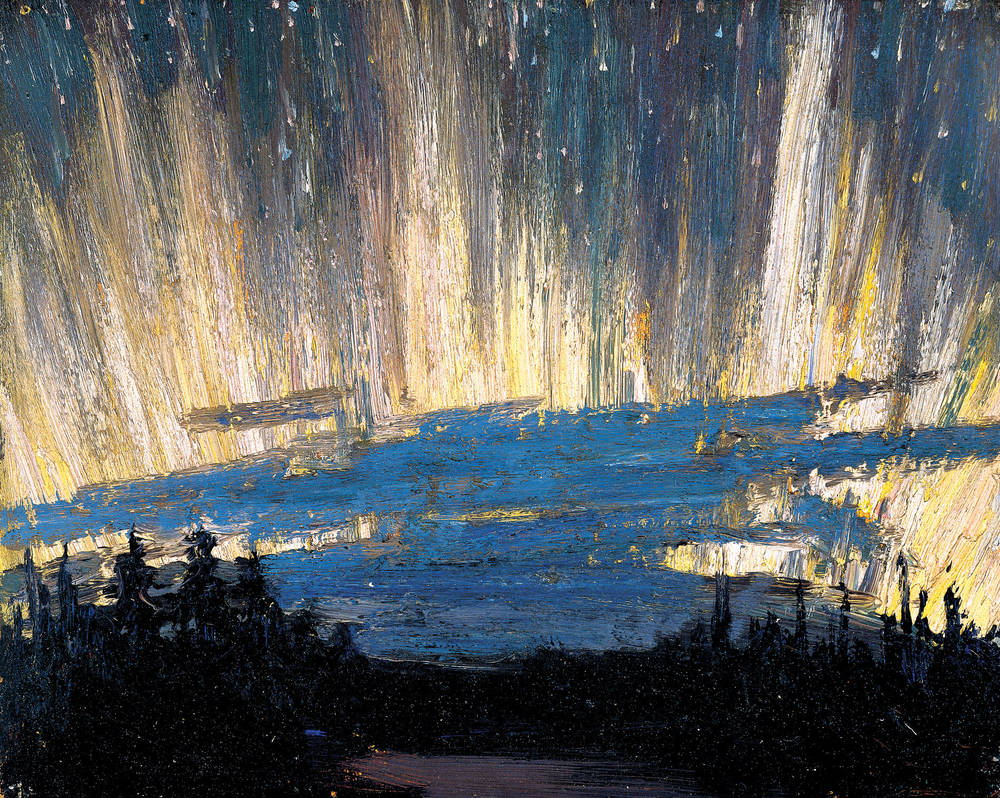Dreaming about things to come: This spring, the Schirn presents the iconic paintings of Canadian modernism from a contemporary perspective.
Lush forests, rushing rivers, lofty peaks and pristine icebergs—these are the icons of modernist Canadian painting. A group of artists such as Franklin Carmichael, Emily Carr, J. E. H. MacDonald, Lawren S. Harris, Edwin Holgate, Arthur Lismer, Tom Thomson and F. H. Varley created a mythical Canada at the beginning of the 20th century, in search of a new vocabulary for the cultural identity of the young nation. In the exhibition Magnetic North. Imagining Canada in Painting 1910-1940, essential works of Canadian Modernism from Canada's major collections will be shown at the Schirn for the first time in Germany.
“Magnetic North” gathers an impressive selection of Canadian paintings made between 1910 to 1940, a period of nation-building and industrial expansion. In a seductive visual language, these paintings and sketches embody the dream of a “new” world and paint an idyll of the overwhelming landscape beyond modern city life and the expanding industrial use of nature. The paintings are thus a testimony to cultural hegemony as well as to the social reality of the exclusion of the Indigenous people, who have occupied the land since time immemorial. Issues of appropriation, oppression, and the exploitation of resources are rooted in the country’s colonial history, which continues to this day, and are critically examined in the exhibition.
The artists painted landscapes in a new and distinctive way
The “Group of Seven” is the artist collective commonly known for this particular period of Canadian painting. The artists came together in Toronto in 1920 and began to paint the picturesque Canadian landscapes in a new and distinctive way, aiming to create a unifying national identity. Stylistically, Art Nouveau and post-Impressionism informed their visions. Their expressive brushwork and powerful color palette were inspired by direct contact with nature and set their work apart from the academic style popular in Canada at the time.

The artists staged and saw themselves as “heroic explorers,” a colonial notion that is to some extent still part of the collective memory to this day. Together, several artists traveled in groups, camping and painting vistas over hills, lakes, and canyons. J. E. H. MacDonald's “Falls, Montreal River” (1920) is a testament to the exhilaration the Group of Seven artist felt in nature. He was fascinated by roaring rivers, old-growth forests, steep slopes, and striking terrace formations, and drew spiritual energy from them.
With images of seemingly untouched nature, the group and its circle created a romantic vision of the land as an uninhabited wilderness, bypassing the Indigenous population. The search for a visual representation of Canada, or for a “new” cultural identity, was at the same time a process of exclusion.

Works by contemporary Anishinaabe artists Lisa Jackson and Caroline Monnet provide a critical counterpoint and contemporary perspective on modernist painting. Their works open up current contexts and put Indigenous voices back at the center. Jackson remarks, “the narrative of the Indigenous peoples in these territories now called Canada has been told for most of history through a colonial lens—and continues to be, though things are changing. This has been deeply damaging to the many Indigenous Nations living here and has deprived generations of Canadians from knowing the truth about their country, whose colonial aims required the displacement, dehumanization, and erasure of Indigenous peoples.”
Paintings such as A. Y. Jackson’s “Night, Pine Island” (1924) represent a natural phenomena that has become emblematic to Canadian identity: The aurora borealis (or northern lights), which results from the interplay of solar winds and the Earth’s magnetosphere, is often a symbol of the north. The glowing cosmic event offered artists a powerful expressiveness as they conveyed the feeling of being awestruck by the immeasurable.
The narrative of the Indigenous peoples in these territories now called Canada has been told for most of history through a colonial lens—and continues to be, though things are changing [...]

Similarly, the image of a solitary tree—often set against a darkening sky and threatening weather—has come to represent the settler mentality. Clinging to the Canadian shield granite, the lone tree endures and even thrives in its rugged setting. The exhibition reveals how Canadian modernist painters employed romantically charged symbols, such as the northern lights or the single tree, elevating them to represent the “new” nation. With these symbolic images paired with crucial works by contemporary Indigenous artists, Magnetic North takes a nuanced look at Canadian history.










